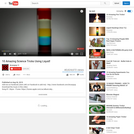
very usefull to understand liquid
- Subject:
- Applied Science
- Material Type:
- Lesson
- Date Added:
- 02/01/2016

very usefull to understand liquid
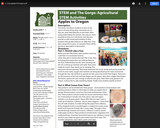
In this lesson, students are introduced to trees and the many things we commonly use that come from trees. Includes introductory movement activity, guided discussion, a matching game, and fun facts.
NGSS: Partially meets 1-LS1-1, 2-PS1-1, 2-PS1-2
Common Core: W.2.7, W.2.8
Time: 30 minutes
Materials: "Apples to Oregon" book and three paper lunch bags labled: wood, food, cellulose.

This sequence of instruction was developed in the Growing Elementary Science Project to help elementary teachers who were working remotely. We developed a short storyline that ties together a few sessions to help explore a specific concept. We tried to include some activities that honored and included the student’s family and experience, and some that included the potential for ELA learning goals.Unlike other units in our series, this was not developed as a complete stand-alone unit. Our intent, in this case, was to provide a set of options for the teacher, as well as some materials for consideration of opportunities to integrate reading in science.It is part of ClimeTime - a collaboration among all nine Educational Service Districts (ESDs) in Washington and many Community Partners to provide programs for science teacher training around Next Generation Science Standards (NGSS) and climate science, thanks to grant money made available to the Office of the Superintendent of Public Instruction (OSPI) by Governor Inslee.

Have you ever passed a pond or swamp and seen bugs walking on the water? Find out how they do it in this Smithsonian Lightning Lesson.
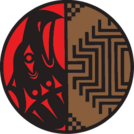
The original Native American story component lesson was developed as part of an Office of Superintendent of Public Instruction (OSPI) and Washington State Leadership and Assistance for Science Education Reform (LASER) project funded through an EPA Region 10 grant. The stories were told by Roger Fernandes of the Lower Elwha Klallam tribe. Mr. Fernandes has been given permission by the tribes to tell these stories.As these lessons and stories were shared prior to the adoption of the Washington State Science Learning Standards in 2013, there was a need to align these stories with the current science standards. This resource provides a current alignment and possible lesson suggestions on how these stories can be incorporated into the classroom. This alignment work has been funded by the NGSS & Climate Science Proviso of the Washington State Legislature as a part of North Central Educational Service District's award.
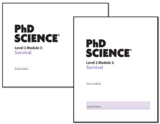
PhD Science Grade Levels K–2 is available as downloadable PDFs. The OER consists of Teacher Editions and student Science Logbooks for every module.
With PhD Science®, students explore science concepts through authentic phenomena and events—not fabricated versions—so students build concrete knowledge and solve real-world problems. Students drive the learning by asking questions, gathering evidence, developing models, and constructing explanations to demonstrate the new knowledge they’ve acquired. The coherent design of the curriculum across lessons, modules, and grade levels helps students use the concepts they’ve learned to build a deep understanding of science and set a firm foundation they’ll build on for years to come.
Cross-curricular connections are a core component within PhD Science. As an example, every module incorporates authentic texts and fine art to build knowledge and create additional accessible entry points to the topic of study.
Three-dimensional teaching and learning are at the heart of the curriculum. As students uncover Disciplinary Core Ideas by engaging in Science and Engineering Practices and applying the lens of Cross-Cutting Concepts, they move from reading about science to doing science.
Great Minds® is the creator of Eureka Math®, Wit & Wisdom®, Alexandria Plan™, and PhD Science®.
Published by Great Minds PBC. greatminds.org
Copyright © 2021 Great Minds PBC. Except where otherwise noted, this PK-2 PhD Science® content is published under Great Minds OER License #1. Use limited to Non-Commercial educational purposes.
COMMERCIAL REPRODUCTION PROHIBITED.
See OER license details here:
https://s3.greatminds.org/link_files/files/000/003/991/original/Final_Form_OER_PhD_Science_K-2_limited_public_license_%282.10.21%29.pdf
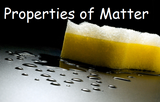
Students will determine a rule for classifying outdoor objects based on physical properties of matter.
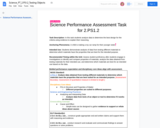
This performance assessment aligns with NGSS Performance Expectation 2.PS1.2 and is intended to be used as an interim assessment. These assessments can either be used summatively, as an end of learning activity, or formatively, utilizing student responses to identify next instructional steps.

In this 2nd Grade Integrated Unit focused around Social Emotional Learning, STEM, Art, and Language Arts, we present students with the driving question: How can we use art to celebrate each and every one of us? Students read a variety of literature that provides them with the opportunity to talk about and think about how each and every student’s uniqueness is beautiful and valued in the classroom community. Students explore a variety of art forms which are introduced by numerous artists from a variety of BIPOC communities. Through various embedded STEM activities (some FOSS), students explore the ways in which STEM ideas help us better understand and create art. The unit culminates with an art showcase where we invite families and community members to visit an art show where the classroom community is celebrated through art. This unit is intended to help us reimagine the ways in which we teach STEM and to highlight the importance of positive identity development in creating equitable opportunities for all our students.
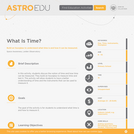
In this activity, students discuss the notion of time and how time can be measured. They build an hourglass to measure time and test it. This activity will allow students to have a better understanding of time and the instruments that can be used to measure it.